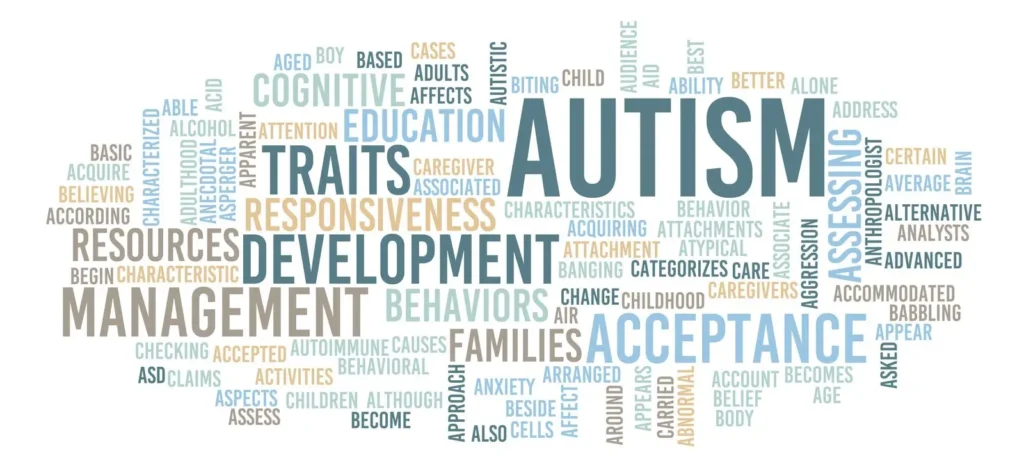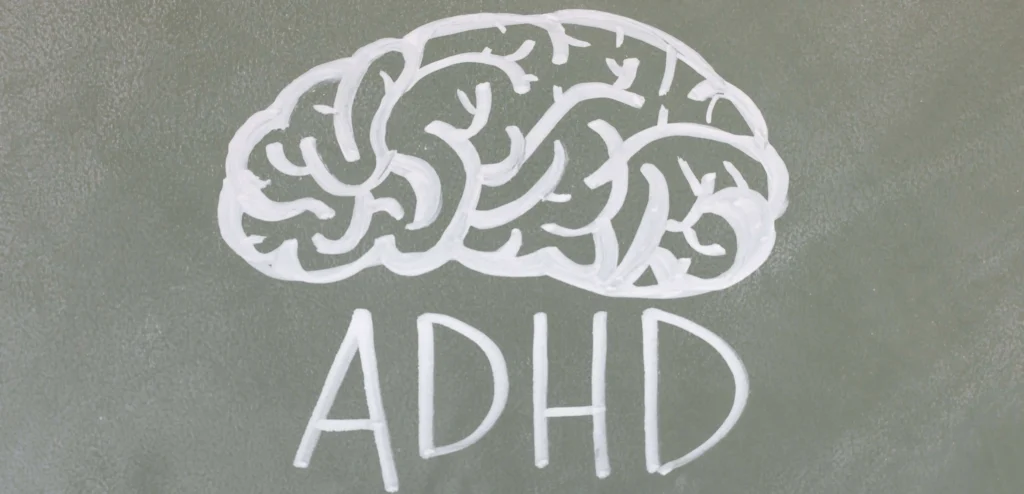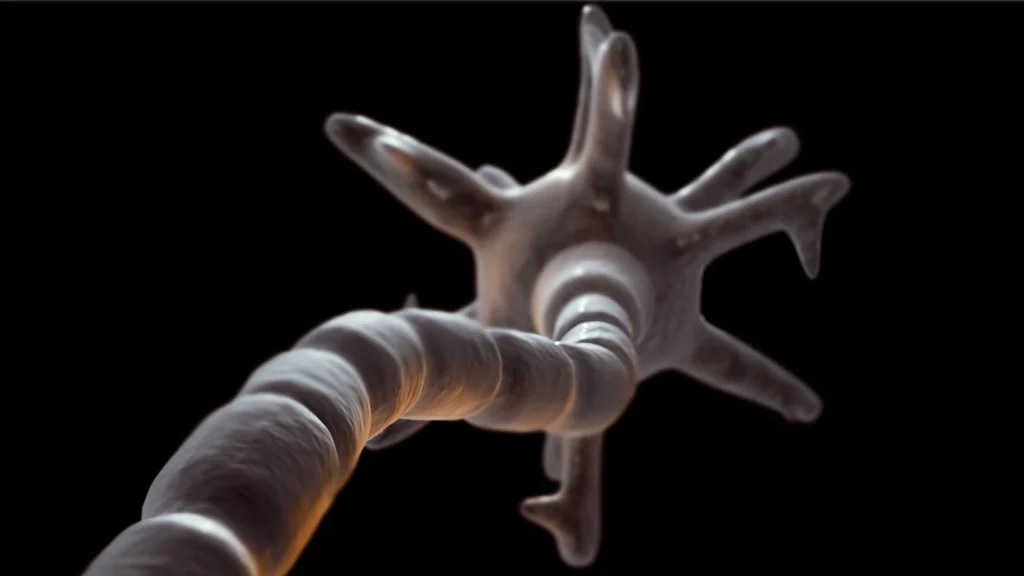ASD Animals & ADHD Q&A – Part 4
A Minute in the Clouds with Greg Day 13 Welcome…
A Minute in the Clouds with Greg Day 13
Welcome to today’s blog where we will explore the intriguing connection between Attention Deficit Hyperactivity Disorder (ADHD) and Autism Spectrum Disorder (ASD). Many people wonder if ADHD is on the autism spectrum or if it is a form of autism itself. Additionally, we will delve into the possibility of animals, such as Can a Cat, Dog, or even Goat, have ADHD. Join us as we uncover the fascinating studies that reveal the impact of dopamine and other neurotransmitters, and other brain chemicals on the behavior of animals exhibiting ADHD symptoms.
ADHD, or Attention Deficit Hyperactivity Disorder, affects a large number of people worldwide, yet there is still a lack of understanding and misconceptions about it. These misconceptions can hinder the support and care that people with ADHD need.
I aim to try and debunk some of the misconceptions around ADHD, promote empathy, understanding and look at some of the recent advancements in diagnosing, managing and treating ADHD.
If you haven’t seen the other articles, please check them out. If you are new to the channel, welcome! I’m glad you’re here. If you enjoy these videos, please consider subscribing to the channel. Click on the bell if you would like to be notified when I post more content.
It is not easy to create when you have ADHD, a brain injury, and a host of other things going on. Comments, likes, and any feedback on how I might make these videos better is always appreciated. Let me know in the comments the type of content you would like to see and I will try to make that happen.
So, let’s dive in and continue exploring the world of ADHD!
Autism Spectrum Disorder (ASD):
Many people often wonder if ADHD is a form of autism, if it falls on the autism spectrum, or if autism can include ADHD. However, before we can provide any answers to these questions, we must first examine what ASD actually is.
ASD is classified as a spectrum disorder, which means it encompasses a wide range of symptoms and levels of impairment. The main characteristics of ASD include difficulties with social communication and restricted, repetitive behaviors.
Autism and Nonverbal Communication
People with ASD may struggle with understanding and utilizing nonverbal communication, such as gestures and facial expressions. Additionally, they may exhibit intense behaviors and interests that consume a significant amount of their time and energy. Furthermore, these behaviors and interests can often be challenging to modify or control.
Some Common Asd Repetitive Behaviors Include:
- Hand flapping
- Rocking back and forth
- Spinning objects
- Repeating certain words or phrases
- Making repetitive movements with their body

Some Common ASD Specific Interests Include:
- Numbers
- Letters
- The weather
- Maps
- Trains
- Animals
Some people with ASD can live independently, while others need significant support. There is no cure for ASD, but early diagnosis and intervention can help people with ASD learn and grow.
Diagnosing Autism Spectrum Disorder
Autism Spectrum Disorder can be diagnosed as early as 18-24 months, although some signs may be apparent even earlier. The specific signs and symptoms can vary depending on the individual, but some early red flags may include:
Here Are Some Additional Resources About Asd:
- The Autism Society of America
- The National Institute of Mental Health
- The Centers for Disease Control and Prevent
Is ADHD on the Autism Spectrum
ADHD and Autism Spectrum Disorder (ASD) are two distinct neuro developmental conditions, each with its own set of diagnostic criteria and characteristics. They do share some similarities but they are not the same, and one is not considered a form of the other.
Is ADHD a Form of Autism
While ADHD can affect social interactions and behavior, it does not include the specific social communication and repetitive behavior patterns seen in ASD. Although some people may have ADHD and ASD, they are separate conditions with distinct diagnostic criteria. While they may share some features, they are not the same, and ADHD is not considered a form of autism.
Understanding ADHD and Autism Spectrum Disorder Overlap
ADHD and ASD exhibit some shared symptoms, potentially leading to confusion or misdiagnosis. Several contributing factors contribute to this overlap:
ADHD/ASD Overlapping Symptoms
Both ADHD and ASD may manifest difficulties in social interactions, communication, and attention
Source: American Psychiatric Assoc: DSM-5-TR
Comorbid Conditions
It is not uncommon for people to experience both ADHD and ASD concurrently, making the diagnostic process more complex.
Source: National Library of Medicine
Inattentiveness in ASD
Some people with ASD may display symptoms of inattention and impulsivity akin to those observed in ADHD.
Source: Association for Child and Adolescent Mental Health
Misinterpretation of Social Difficulties
While social challenges are present in both disorders, their nature may differ, leading to potential misinterpretations Source: National Library of Medicine
Late Diagnosis
In certain cases, ADHD might be identified earlier, with ASD being recognized later in life.
Developmental Variability
Symptom presentation can vary with age and developmental stage, further complicating differentiation.
To ensure precise diagnoses and suitable interventions, a comprehensive evaluation by qualified healthcare professionals specializing in neurodevelopmental disorders is indispensable. Early diagnosis and tailored support can significantly enhance outcomes and improve the quality of life for those with ADHD, ASD, or comorbid conditions.
Some ASD Statistics & Facts
- Autism and ADHD often coexist, with 30-80% of children with autism meeting criteria for ADHD and 20-50% of children with ADHD meeting criteria for autism.
- Scientists are exploring shared biological roots between the two conditions, but conclusive evidence is lacking.
- Autism and ADHD frequently occur together, with common behavioral features such as language delays, sensory responses, defiant behavior, and difficulty with emotion regulation.
- Genetic studies show some shared risk factors, but individual genes and variants responsible for both conditions remain uncertain.
- Brain imaging studies reveal mixed findings, with both shared and different brain alterations in autism and ADHD.
- Some behaviors that appear similar in both conditions may have different underlying motivations and mechanisms.
- The best treatment for someone with both autism and ADHD is still uncertain, and more research is needed to improve therapies and early detection.
More systematic research is needed to understand the relationship between autism and ADHD.
Source: Spectrum News – Decoding the overlap between autism and ADHD

Can You Be Autistic and Have ADHD at the Same Time
- More than half of those diagnosed with ASD also show signs of ADHD, making it the most common coexisting condition in children with ASD.
- Up to a quarter of children with ADHD have low-level signs of ASD, such as difficulties with social skills or sensory sensitivity.
- Both ADHD and ASD are neurodevelopmental disorders affecting the central nervous system and executive functioning, but the exact reasons for their frequent coexistence are not yet fully understood.
- Brain development, including executive functions, is affected in both ADHD and ASD, leading to challenges in decision-making, impulse control, time management, focus, and organization skills.
- Both conditions are more common in boys, and while adults can have both ADHD and ASD, the combination is not as prevalent as in children.
- Many children are first diagnosed with ADHD when they start preschool due to restlessness, impulsivity, and difficulty paying attention. Conversely, signs of ASD may be evident before the age of two, including avoidance of eye contact and delayed language development.
- Children with ADHD often have difficulty focusing, get easily distracted, and struggle to complete tasks, while children with ASD tend to be overfocused, inflexible with routines, and have sensory sensitivities.
- Treatment for ADHD usually includes medication, while ASD may respond better to non-medication alternatives like behavior therapy and skills training.
- Medications used to treat ADHD may have different effects when used in individuals with both ADHD and ASD, sometimes causing more side effects and less effectiveness.
Source: CHADD ADHD and Autism Spectrum Disorder
Can Animals Have ADHD?
ADHD, or Attention Deficit Hyperactivity Disorder, is a mental health condition that has been extensively studied in humans. However, it is still unclear whether or not animals can have ADHD. Although animals cannot exhibit complex human behaviors such as language, their basic functions are similar to ours. This similarity makes animals valuable for studying human disorders, including ADHD. Through these studies, we gain a better understanding of the disorder, particularly when comparing it to conditions that lack animal models. There is no one definitive answer to the question of whether or not animals can have ADHD. However, there is evidence to suggest that some animals may exhibit symptoms similar to those of ADHD.
For example, some studies have shown that dogs with ADHD may be more likely to fidget, have difficulty paying attention, and be impulsive. More research is needed to determine whether or not animals can truly have ADHD. However, the evidence suggests that some animals may exhibit symptoms similar to those of the disorder.
The Role of the Nervous System
The Dopaminergic System
Animals with characteristics of ADHD show functional impairments in their dopaminergic system, which plays a key role in regulating behaviors. These impairments often manifest as decreased dopamine concentrations. Dopamine, a neurotransmitter that acts as a chemical messenger in the brain, is believed to influence the behaviors commonly associated with ADHD.
Therefore, an impaired dopamine system could result in ADHD-like behaviors.
Neural Circuits
Studies also suggest that ADHD might cause alterations to neural circuits and neurotransmitters within the brain. These changes could potentially be mirrored in animals, adding another layer of complexity to the study of ADHD.
Effects of Psychostimulants
Psychostimulants, substances that increase brain activity, often affect dopamine concentrations. However, animal models of ADHD suggest that these substances might not act on the dopamine transporter as expected. Instead, they might actually increase serotonin levels, thereby decreasing motor activity.

Brain Changes in ADHD and Dopamine
Dopamine
The role of dopamine in the brain is far-reaching. It modulates information transfer between different brain areas, influences behavior, and aids in synaptic reinforcement, shaping the brain’s programming.
In ADHD, dopamine dysfunction could contribute to altered reinforcement processes.
Norepinephrine
Norepinephrine, another neurotransmitter, is hypothesized to be poorly regulated and overactive in the prefrontal cortex of children with ADHD.
This neurotransmitter enhances the brain’s ability to focus on relevant stimuli and ignore distractions, functions that are often impaired in ADHD.
Serotonin
Serotonin, a third neurotransmitter, may also function differently in animals showing ADHD characteristics.
Some studies suggest that serotonin content and its influence on behavior could be altered in these animals.
Glutamate
Glutamate, another key neurotransmitter, interacts with both dopamine and norepinephrine. Glutamate helps regulate the concentration of dopamine in the brain and its effects may be different in animals with ADHD-like behaviors.
Conclusion
The exploration of ADHD in animals can offer unique insights into the neurobiology of the disorder and how neurotransmitters such as dopamine play a role.
While animals don’t perfectly mirror human ADHD, their simpler nervous systems allow researchers to identify key neurobiological changes related to ADHD.
This knowledge is vital, not only for understanding the disorder but also for developing new treatments to alleviate its symptoms.
Source: National Library of Medicine – Animal models of attention-deficit hyperactivity disorder
Can Dogs Have ADHD?
I. Introduction
While dogs cannot be diagnosed with Attention-Deficit/Hyperactivity Disorder (ADHD) in the same way humans are, they can display symptoms similar to those seen in human ADHD.
These symptoms are often classified under the broader category of canine hyperactivity or Canine Hyperkinesis Disorder (CHD).
II. Evidence from Research Studies
Study: Canine Hyperkinesis Disorder: Prevalence and Risk Factors Among a Cohort of Dogs
Experimental research study
Found that certain breeds, such as terriers, had higher rates of hyperactivity symptoms
Potential ethical implications: Selective breeding for hyperactivity may have welfare implications for dogs
Source: Journal of Veterinary Behavior

III. Canine Hyperactivity vs. Human ADHD
The concept of ADHD in dogs is controversial because the human condition requires symptoms to be present in multiple settings (home, school, work, etc.).
Since dogs do not have the same environmental experiences as humans, the translation of ADHD diagnosis is not directly applicable.
IV. Statistics
- While exact prevalence is not well-documented due to varying definitions and methodologies, studies suggest:
- Approximately 0.5% to 3% of dogs may exhibit symptoms of hyperactivity
- Higher rates reported in certain breeds such as Jack Russell Terriers, suggesting breed-specific predisposition
Source: Psychology Today, ‘Do Dogs Get ADHD?‘
V. Impacts on Dogs and their Human Companions
Hyperactivity in dogs can have a number of consequences:
Difficulty in training
Hyperactive dogs may struggle to focus during training sessions
Increased stress
Both for the dog and their human companions
Potential physical harm
Uncontrolled hyperactivity can lead to accidents
VI. Final Remarks
In conclusion, while dogs cannot be clinically diagnosed with ADHD, they can exhibit similar symptoms which can impact their quality of life and their relationship with humans.
Can Cats Have ADHD?
I. Introduction
Just as with dogs, cats cannot be diagnosed with ADHD in the way humans can. However, they can exhibit behaviors similar to ADHD, often categorized as feline hyperactivity or hyperkinesis.
II. Research Studies and Evidence
Study: Feline hyperaesthesia syndrome with self-trauma to the tail: retrospective study of seven cases and proposal for integrated multidisciplinary diagnostic approach
Observational study
- Examined a related condition, feline hyperesthesia syndrome, which exhibits hyperactivity and restlessness
- Ethical considerations: Adequate understanding of these behavioral disorders is critical for ensuring cats’ welfare.
Source: Journal of Feline Medicine and Surgery

III. ADHD-like Symptoms in Cats
Cats may display signs similar to ADHD, such as:
- High energy levels
- Distractibility
- Restlessness
- Difficulty calming down
IV. Implications on Cats and their Human Companions
Hyperactivity in cats can have several implications:
- Challenges in training: Cats may struggle to focus during training sessions
- Increased stress: For both the cat and their human companions
- Potential physical harm: Uncontrolled hyperactivity can lead to accidents or self-harm
V. Statistics
The prevalence of feline hyperactivity is not well-documented, largely due to inconsistent definitions and lack of comprehensive research.
It’s considered relatively rare, but exact numbers are unavailable.
Source: International Cat Care, ‘Hyperaesthesia Syndrome‘
VI. Conclusion and Future Directions
While cats cannot be clinically diagnosed with ADHD, they can exhibit symptoms akin to hyperactivity. This can affect their wellbeing and their relationships with their human companions.
Can Goats Have ADHD?
I. Introduction
Similar to dogs and cats, goats cannot be clinically diagnosed with Attention-Deficit/Hyperactivity Disorder (ADHD) as humans can.
However, they can manifest behaviors that resemble hyperactivity or restlessness, commonly attributed to environmental factors or health issues.
II. Research Studies and Evidence
As of my last knowledge cut-off in September 2021, there weren’t any specific studies conducted on ADHD-like symptoms in goats. This reflects a general lack of research in this area.
III. ADHD-like Symptoms in Goats
Though not labeled as ADHD, goats may demonstrate similar symptoms like:
- High energy levels
- Restlessness
- Rapid changes in behavior

IV. Potential Causes of Hyperactivity in Goats
It’s essential to consider possible causes before attributing these behaviors to ADHD-like symptoms:
- Inadequate nutrition: Goats require a balanced diet to maintain proper behavior and health.
- Insufficient exercise: Lack of physical activity can lead to restlessness.
- Illness: Certain health conditions might provoke hyperactive behavior.
V. Implications on Goats and Their Human Companions
Hyperactivity in goats could have several implications:
- Challenges in handling: Hyperactive goats may be hard to manage, especially in a farming context.
- Increased stress: For both the goat and their human companions.
- Potential physical harm: Uncontrolled hyperactivity can lead to accidents.
VI. Conclusion and Future Directions
While goats cannot be clinically diagnosed with ADHD, they can exhibit behaviors similar to hyperactivity.
However, these behaviors are typically linked to other factors such as diet, environment, or health issues.
I hope you enjoyed today’s content. See you tomorrow, and remember:
TAKE CARE OF YOUR MIND!
